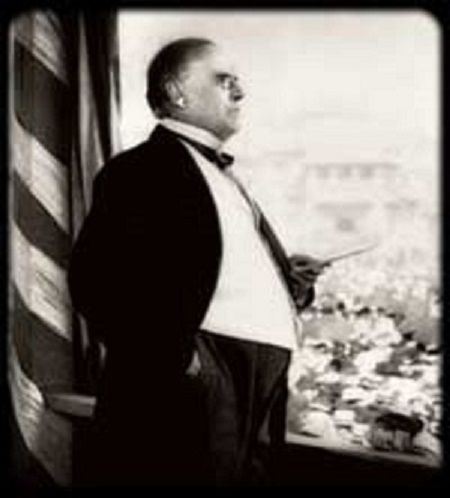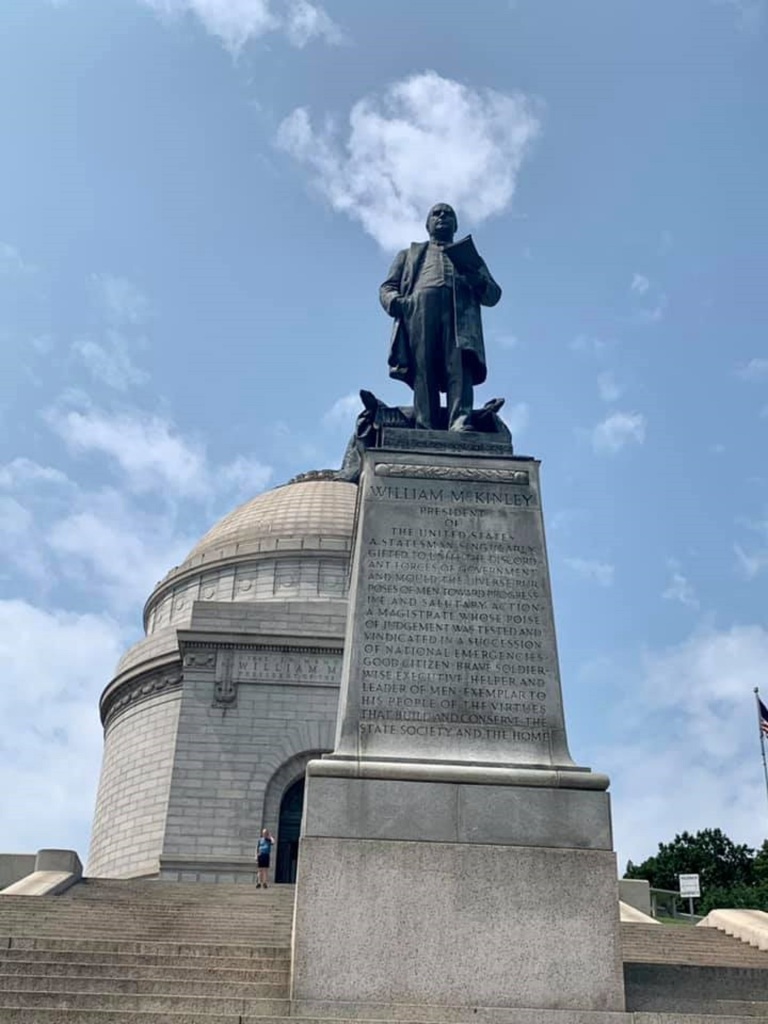“I have never been in doubt since I was old enough to think intelligently, that I would someday be made president.” These words were spoken during his youth by William McKinley, the first president to ride in an automobile while in office as well as the first to use a telephone as part of his campaign.

The resting place of William McKinley, 25th president of the United States, catches your eye over the tree tops while driving down I-77 through Canton, Ohio. The domed mausoleum is more than a mere resting place but serves as a monument to Canton’s favorite son and former governor of Ohio.

There are several reasons that McKinley is a favorite in this area even though he was born in Niles, Ohio. Canton is where he started his law career, found his true love, and ran for the highest office in the land. While attending the 1901 Pan-American Exposition in Buffalo, New York, President McKinley was assassinated just seconds after giving the good luck red carnation from his label to a little girl waiting in line.

In 1905 construction began after selecting a memorial design drafted by Harold Van Buren Magonigle. This architect began his career at the age of thirteen when he worked as a draftsman for the firm that designed Central Park in New York City.
The amount being raised for the purchase of land and the mausoleum was $600,000. Local businesses and friends were large contributors. However, many school children contributed their pennies toward the building of this mausoleum, which was completed in 1907.

The front steps seem to be a real attraction for area residents as a wonderful place for exercise, either walking or running. Since there are 108 steps up to the McKinley Monument, it is a challenge to young and old alike. The front steps are fifty feet wide and are broken into four flights of twenty-four steps with the final flight having only twelve.

Nearing the top of the stairs, visitors are greeted by a 9 1/2′ bronze statue of William McKinley created by Charles Henry Nishaus. It depicts President McKinley delivering his final public address at Buffalo, NY in 1901.
The circular, domed mausoleum recaptured the spirit of ancient cultures and formed the center of the cross design Magonigle intended to create. The longer arm of the cross was formed by front steps and what was called Long Water.

Originally Long Water was a spectacular part of the monument with a 575-foot lagoon, consisting of five different water levels cascading downward into a reflecting pool. Unfortunately, due to stagnant water caused by poor circulation, this lagoon was filled back in the 1950’s. Both side arms of the cross were formed by shorter entry steps, and the top portion was a driveway behind the monument.

Magonigle considered this shape to have a double meaning. The upper part of the cross resembled the handle of a sword, while the Long Water symbolized the blade. This seemed appropriate due to McKinley’s military career during the Civil War as well as his being commander-in-chief during the Spanish-American War.

Above ground in the pink marble memorial, President McKinley and his First Lady are entombed in two side-by-side sarcophagi of elegant green granite on a dark maroon granite base. Their two daughters have found their final resting place here also, entombed in the back wall of the memorial. Katherine died at the age of four from typhoid fever while Ida died during her first year.
Wreaths are constantly being placed by individuals and organizations at the foot of the granite-clad coffins. Most of the wreaths are in traditional red, white and blue.

Seventy-five feet overhead is a beautiful red, white and blue skylight with a 45 star design, representing the number of states in the Union at the time of McKinley’s death. While it looks small from below, this beautiful window to the sky measures twelve feet in diameter.
If you wish to visit the memorial without climbing all those stairs, there are two possibilities. A steep road leads up the hill behind the Memorial or there is also an elevator, which operates only during museum business hours by use of a special code, which you must ask for at the museum’s admission office nearby. Admission to the McKinley Monument is free.

Hopefully, this monument and the life of William McKinley will be an inspiration to someone today. President McKinley had hoped for this when he said, “That’s all a man can hope for during his lifetime, to set an example, and when he is dead, to be an inspiration to history.”
The McKinley Monument is located in downtown Canton, Ohio just off I-77. Take Exit 105 for OH 172, then turn right on 7th Street NW. Take the first left onto McKinley Monument Drive and enjoy a little piece of history.
Comments on: "Majestic McKinley Monument Honors 25th President" (3)
A wonderful post for the late President, Bev. I never knew where he was buried. So sad he lost both daughters.
I had to show you John’s post.
https://wordpress.com/read/feeds/67302457/posts/5221325265
Thanks for reading my posts! Perhaps I should do a Gypsy Road Trip about the Bellevue Railroad Museum someday. We are surrounded by history if we care to keep our eyes open.